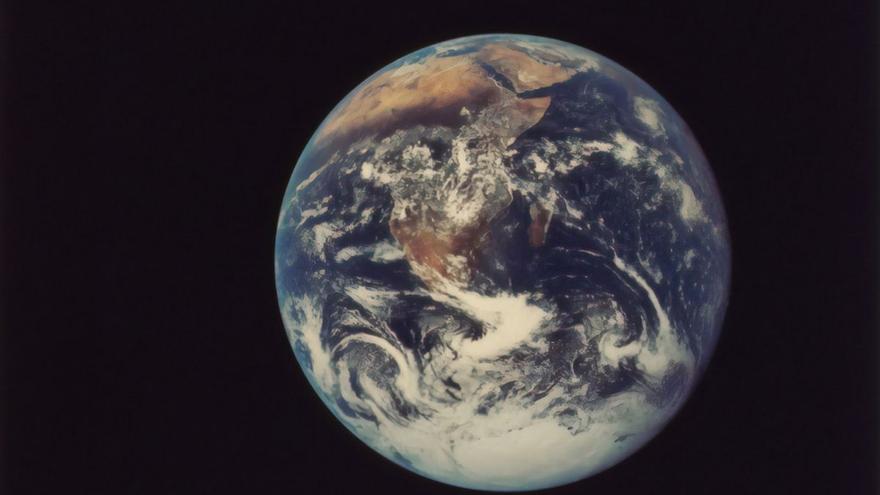The days on Earth are longer and science still can’t explain them

If the process intensifies, it may affect technologies such as GPS and the Internet
Atomic clocks, combined with accurate astronomical measurements, revealed that the length of the day on Earth suddenly lengthens, and scientists don’t know why. Although the Earth’s rotation has accelerated in recent decades, since 2020 this continuous acceleration has strangely changed into a slowdown: the days are getting longer again and the reason is so far a mystery.
Two researchers from the University of Tasmania in Australia confirmed in a recent article in The Conversation that the Earth has passed in the past two years. slowing down process, resulting in longer days. However, the acceleration observed in the past 20 years resulted in the shortest day being recorded on June 29, 2022. Now, the trend has been reversed and the promise of long-term intensification has been reversed.
According to scientists, this change of direction Unprecedented in the last fifty years: If it becomes more obvious, it could jeopardize key systems for the daily functioning of our planet, such as GPS navigation or the Internet. What is the reason for this difference, which takes us from the shortest days ever recorded to a new extension of its duration?
Not every day lasts 24 hours
Although the clock on our smartphone tells us that every day has exactly 24 hours, in reality every day does not last with an accuracy of 86,400 seconds. Minor changes lead the Earth to Modify the time it takes to complete one cycleRotation on its axis. The differences occur over millions of years or almost instantaneously: phenomena such as earthquakes and large storms can play an important role in these changes.
In fact, any slight change in masses affecting the Earth’s interior and surface results in differences in the exact time of rotation. If we look at a classical dancer, we can see that she can rotate faster when she brings her arms toward her body, which is the axis she rotates around. Something similar happens with Earth: mass distribution Impacting it increases or decreases its speed.
The relationship between the interior of the Earth and its surface also plays a role: earthquakes A greater effect can alter the length of the day, although usually in small amounts. For example, the 2011 Great Tohoku earthquake in Japan, which measured 8.9 on the Richter scale seismicity, accelerated the Earth’s rotation by about 1.8 microseconds. It seems insignificant for our vision, but it is not so for the planet.
In the same sense, the bimonthly and monthly cycles of Tides They move masses around the planet, causing changes in day length of up to milliseconds in both directions. a movement ambiance and the ocean currents Also plays an important role, even the seasonal layers of the snowThe rainy or extract underground water It can change the length of the day.
An inexplicable turn
Since about the sixties, radio telescopes From all over the planet they are beginning to get very accurate estimates of the speed of the Earth’s rotation. A comparison of these estimates with the atomic clock has revealed an increasingly shorter day length in recent years.
However, there is a new fact that surprises scientists: By removing the fluctuations in rotational speed that we know are caused by tides and seasonal influences, the trend for shorter days appears to be reversed. Although Earth reached its shortest day in 2022, the long-term path appears to have passed From shorter days to longer days Since the year 2020.
This sudden difference, unprecedented in the past five decades, has not yet been explained by scientists. A possible explanation would be the so-called “Chandler’s wobble,” a small deviation in the Earth’s rotation axis for about 430 days. Some data shows this process may be relevant, but Australian researchers have another idea.
Apparently, nothing specific had changed in or around the land. It would simply be long-term tidal effects, which, working in parallel with other cyclic processes, would cause a temporary change in the rate of Earth’s rotation. If the planet changes to longer days in the future, we may need to merge a file “negative leap second”: Periodically, timers insert leap seconds into our official timelines so they don’t lose sync with Earth, but doing so passively is unprecedented and could put the Internet under control.

“Award-winning zombie scholar. Music practitioner. Food expert. Troublemaker.”


/cloudfront-eu-central-1.images.arcpublishing.com/prisa/AHVYMMDSTZDTDBFNZ3LMFUOKNE.jpg)




/cloudfront-eu-central-1.images.arcpublishing.com/prisa/X33WQ3GSYFF3DBKJDAVIGHN3DA.jpg)


:quality(75)/cloudfront-us-east-1.images.arcpublishing.com/elcomercio/4RVP2XAGIRGJ5MSXST53STHBKI.jpg)
